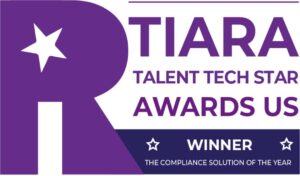Pay transparency laws are reshaping how organizations approach compensation and communication with employees. In recent years, several states, including California, New York, and Colorado, have introduced regulations requiring salary ranges to be disclosed in job postings. As we enter 2025, more states are expanding these requirements. For HR professionals, keeping up with the evolving landscape is critical—not only to ensure compliance but also to foster trust, fairness, and transparency within the workplace.
Failing to comply can lead to significant penalties, reputational damage, and potential lawsuits. Organizations operating in multiple states face an even greater challenge as they navigate a patchwork of overlapping regulations. Taking a proactive approach to compliance will help mitigate risks and improve overall organizational culture.
What to Expect from Pay Transparency Laws in 2025
Pay transparency laws aim to address pay inequity by giving job seekers and employees more visibility into compensation practices. While the specifics vary by state, most laws share common requirements, such as:
- Posting salary ranges: Employers must disclose a pay range in job advertisements. Some states require that these ranges be “good faith” estimates, while others have stricter guidelines on accuracy.
- Providing pay information to employees: Current employees can request their pay range, and employers are required to provide it.
- Ensuring transparency in promotions and raises: Several states now require transparency in pay when employees are offered promotions or raises.
It’s essential for HR professionals to stay updated on these laws to avoid compliance issues and potential fines. Even more importantly, pay transparency promotes a fair and equitable workplace, which is becoming an expectation for today’s workforce.
The Challenges for Multi-State Employers
Employers with operations in multiple states must juggle varying requirements. What’s acceptable in one state may be prohibited in another. For example, a job posting in New York may require a specific salary range, while California mandates disclosure not just in job postings but also during interviews.
These differences create compliance challenges that can lead to confusion if not properly managed. To reduce risks, organizations should build a framework for monitoring legal changes and standardizing compensation practices across their locations.
Steps for Ensuring Compliance
While compliance may seem daunting, a well-structured approach can help HR teams stay ahead. Here’s how to get started:
- Audit Current Pay Practices
Start by reviewing your existing pay structures and policies. Ensure that your compensation strategy aligns with market standards and reflects your organization’s values. Pay audits are an effective way to identify and correct any pay discrepancies. - Update Job Descriptions and Postings
Ensure job postings include clear and accurate salary ranges. This step not only keeps you compliant but also improves your recruiting process by setting expectations upfront. Candidates increasingly seek employers who are open and honest about pay. - Train Managers and Recruiters
Educate managers and recruiters about pay transparency laws. Equip them with tools and talking points to discuss salary ranges with candidates and employees confidently. Consistency is crucial to avoid miscommunication. - Develop a System for Monitoring Legislative Changes
Pay transparency laws are evolving rapidly. Build a process to monitor updates and implement changes as needed. Consider assigning someone on your HR team to focus on legislative compliance or partnering with legal experts.
Why Pay Transparency Is Good for Business
Complying with pay transparency laws isn’t just about meeting legal requirements—it’s also a smart business strategy. Studies have shown that companies with transparent pay practices see higher employee engagement and retention.
Transparency builds trust and helps employees feel more connected to their organization’s mission and values. It also plays a critical role in diversity, equity, and inclusion (DEI) efforts by addressing pay gaps and promoting fairness across the board.
For candidates, pay transparency signals an open and inclusive workplace. As job seekers prioritize fairness and equity, companies that embrace these practices will stand out in an increasingly competitive talent market.
How Technology Can Simplify Compliance
Tracking the nuances of state-specific pay transparency laws can be time-consuming and complicated. HR technology can ease the burden by automating updates, monitoring new regulations, and ensuring compliance.
Solutions like VirgilHR’s multi-state compliance guides, legal library, and real-time alerts provide HR teams with the tools they need to stay compliant. With technology handling the complexity of regulatory changes, HR professionals can focus on higher-level strategic initiatives.
Ready to simplify compliance and stay ahead of evolving regulations? Schedule a demo with VirgilHR and discover how our platform can help you manage pay transparency and other compliance requirements with ease and confidence.






